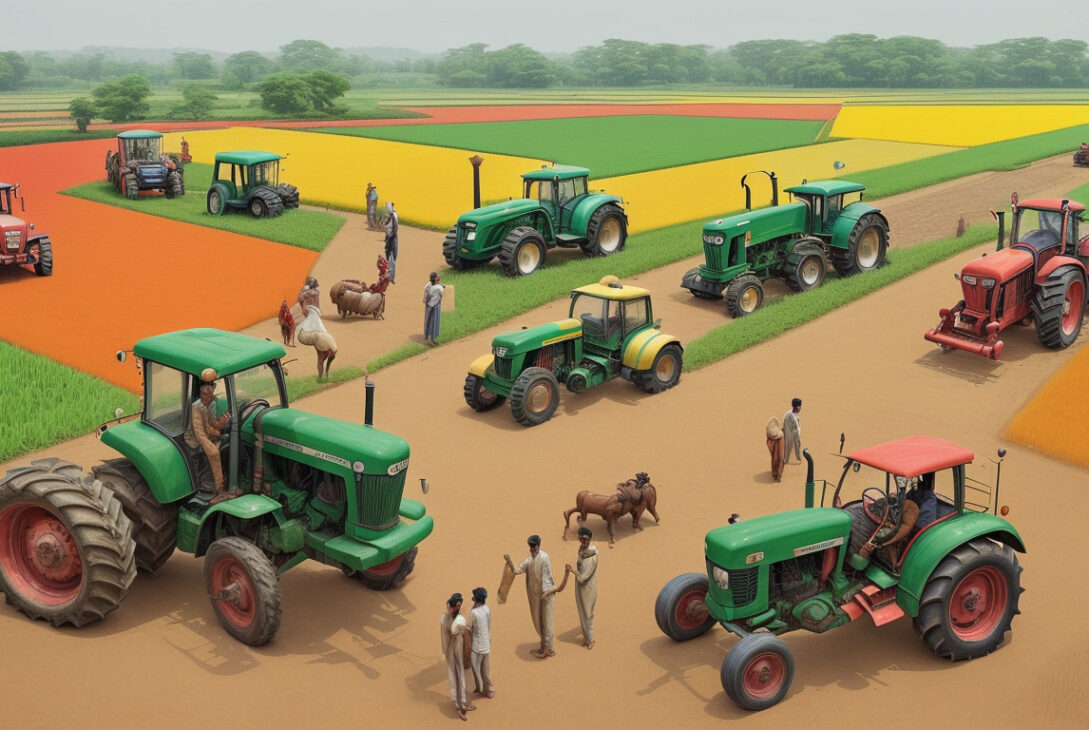Made in India: The Story of Indian Tractors and Foreign Technology
India’s journey with foreign technology has been marked by various phases of adaptation, assimilation, and innovation, reflecting the nation’s evolving economic strategies and developmental priorities. The story of Indian tractors exemplifies this trajectory—from dependence on Western imports to domestic manufacturing, and eventually to exporting competitively priced machinery back to global markets.
A Legacy of Import and Adaptation
In the years following India’s independence, the country relied heavily on foreign technology to boost its agricultural productivity. This dependency was particularly visible in the mechanisation of agriculture, a sector critical to India’s rural economy. India imported tractors, power tillers, threshers, electric pumps, seed sowing machines, and harvesters from its global trade partners to close the gap between traditional farming methods and modern agricultural practices.
The tractor industry in India is often described as a “barometer for the state of the rural economy,” mirroring the health of agricultural livelihoods. Its evolution is a case study in how India embraced and built upon foreign technology to serve its own needs.
Early Years: British Surplus and Local Experimentation
In southern India, particularly in Tamil Nadu (then the Madras presidency), detailed administrative reports document the early days of mechanised farming. Tractors were first introduced on large farms by the British in the early 20th century. These machines were seen as powerful tools requiring low-skilled labor, enabling a dramatic shift away from labor-intensive and animal-powered ploughing.
Right after independence, the Madras Administration leveraged surplus tractors and machinery left by the British army to support agricultural activities. The 1947 report records the acquisition of 54 tractors, including 30 bulldozers, which were hired out at concessional rates for ploughing and land leveling. This not only advanced mechanisation but also demonstrated early governmental efforts to make such technology accessible to farmers.
The subsequent year’s Madras Administration Report (1948–49) introduced the Grow More Food campaign, targeting an increase in rice production by over half a million tonnes by 1951–52. Mechanical tools like tractors became central to this initiative. The government imported thousands of tonnes of iron and steel to produce spare parts locally, sustaining and expanding tractor operations. By this period, over 150 tractors were available for hire to farmers across the presidency, dramatically enlarging cultivated acreage and boosting food production.
To maintain and repair these machines, regional workshops were established in Coimbatore and Bapatla, focusing on servicing existing tractors and restoring British-era units. This local infrastructure was key to ensuring the longevity and functionality of farm machinery, further supporting agricultural growth.
From Import to Innovation and Export
Over the decades, India transitioned from being a consumer of foreign agricultural machinery to becoming a manufacturer capable of innovating and exporting competitive products internationally. The Indian tractor industry’s rise reflects the broader story of India’s economic development—from reliance on external technology during early five-year plans, to self-reliance post-independence, followed by gradual liberalisation and global partnerships in the late 20th and early 21st centuries.
Today, Indian tractors not only serve the domestic market but have also made inroads into international markets, valued for their affordability and reliability. This reverse flow—selling Indian-made tractors back to Western countries—underscores the profound transformation of India’s industrial and technological capabilities.
Conclusion
The evolution of tractors in India encapsulates a larger narrative about the country’s relationship with foreign technology. It paints a picture of progressive adaptation, local enhancement, and eventual leadership in agricultural machinery manufacturing. From British surplus equipment to homegrown innovation, India’s tractor industry remains a symbol of the nation’s agricultural advancement and economic resilience.
This article originally appeared in India’s World, a publication dedicated to exploring India’s geopolitics, economics, technology, and culture.










